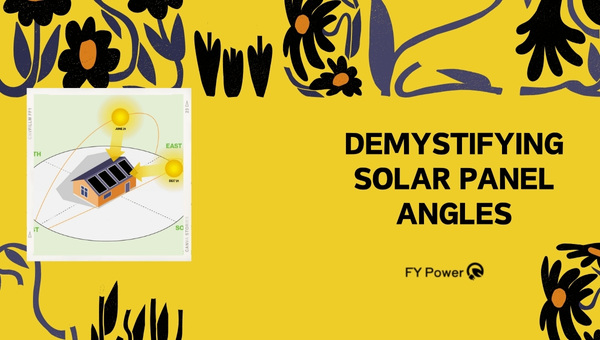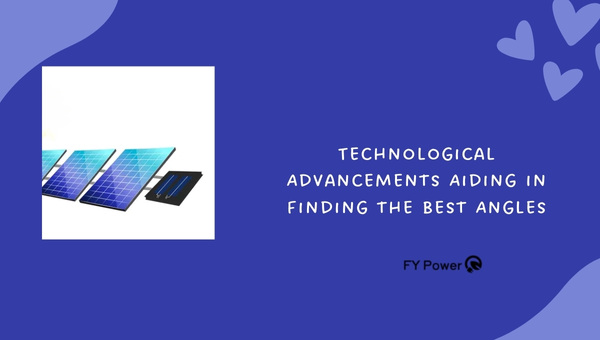Imagine harnessing the exceptional energy of the sun at its highest efficiency. As a homeowner looking to install solar panels, you’ve probably researched extensively on how best to position them. One term that might keep popping up is ‘tilt angle for solar panels.’ It’s critical yet somewhat confusing.
A common misconception that floats around is that the latitude of your location corresponds directly to the optimal tilt angle for solar panels. While arguably a general thumb rule, it isn’t entirely accurate.
Furthermore, myriad factors come into play, such as seasonality, the path of the sun, and even roof design! Adjusting your panels correctly can make all the difference between an adequately performing unit and a super-efficient one.
What You Will Discover In This Post:
- The truth behind the ‘latitude-equals-tilt-angle’ myth.
- Key factors influencing optimal tilt angle.
- I recognize ideal tilt angles based on sun paths and seasons.
- The advantage of adjustable versus fixed mounts.
- How advancements in technology aid in configuration optimization.
Demystifying Solar Panel Angles
There’s a lot of chatter about the right ’tilt angle for solar panels,’ and I’m here to simplify it all. Let’s break the ice with a common belief that’s been doing the rounds – The Misconception of Latitude.

The Misconception of Latitude
Often, people assume that the optimal solar panel tilt is going to be equivalent to their location’s latitude. Sure, it appears logical, as you’d generally want your solar panels angled towards the sun. But look closely – grounding on this theory can hinder your quest for maximizing solar panel efficiency.
Latitude does have a notable influence on your solar panel’s performance. Yet, stating it as the solitary deciding factor for obtaining the ‘optimal tilt for solar energy’ is an overstatement. Mother Earth bestows us with complex climate conditions and variable weather patterns. Thus, sticking solely to latitude can mean you’re losing out on harnessing the maximum solar energy possible.
Factors Influencing Tilt Angle
So, now that we’ve understood that relying only on latitude isn’t wise, let me walk you through other factors that are fundamental in deciding the tilt angle for solar panels:
Orientation:
The direction your panels face has a significant effect on their productivity level. Regardless of your geographic position or season, improperly oriented solar panels will not soak up much sunlight.
Time Of Year:
As our planet goes around its orbit repeatedly over four changing seasons – adjusting your tilt angle can greatly assist in catching more sunshine during each season.
Roof Tilt:
The architectural design of your roof profoundly impacts how you set up any installed panels. Adjusting to your roof’s incline can provide an additional boost in efficiency.
Location’s Climate:
Local weather patterns play a crucial role in solar panel efficiency. Areas with more cloud cover year-round might need a different approach from those with abundant sunshine.
Latitude:
While not the definitive answer, latitude still plays a part in this puzzle. This factor sets a baseline for the starting point when calculating tilt angles for solar panels.
Also Read: Storing Your Generator: Short-Term & Long-Term Storage Tips
Recognizing the Ideal Tilt Angle for Solar panels
Solar panels can provide us with a clean and renewable source of energy. However, to make the most of this power source, we need to consider carefully how they are positioned.
Reading Sun Charts
Understanding sun charts is like learning a new language, one where the sun holds conversations with your solar panels.
To effectively learn this language for determining the perfect tilt angle for my solar panels, I took a closer look at sun charts.
A sun chart illustrates how the position of the sun changes throughout different times of day and various seasons. It often includes details such as azimuth (direction) and altitude (height above the horizon) angles of the sun.
- Azimuth Angle: This refers to the direction measured from true north towards east on a horizontal plane.
- Altitude Angle: It is an angle measured upwards against the horizon.
By reading these charts correctly, I can position my solar panels in such a way that
Changing Angles with Seasons
Seasonal changes also affect our ’tilt angle for solar panels.’ Here’s why:
- Summer: During summer months when days are longer, your solar panel should be tilted less than your latitude (15 degrees less precisely). This action will let your panel absorb more direct sunlight.
- Winter: Conversely, in winter when daylight hours are fewer, you should raise your ’tilt’ by about 15 degrees compared to your latitude level. By doing this way you capture more light which hits Earth at a lower angle during these months.
Understanding seasonal differences and changing angles accordingly boosts maximizing solar panel efficiency substantially.
Also Read: Info About Predator 2000 Generator Oil Type Capacity Change
Technological Advancements Aiding in Finding the Best Angles
As we move further into a world driven by technology, it’s clear that even the field of solar panels is advancing. The ’tilt angle for solar panels’ is no longer something that needs to be calculated manually or guessed. There are now smart apps and automated mounting systems available to do this job.

Smart Apps
I never thought I’d see the day when an app could tell me the perfect angles for my solar panels. But then again, there’s an app for almost everything these days.
There are quite a few apps out there nowadays that can help us find the ‘perfect tilt angles for Solar Panels.’ Some use NASA data while others use meteorological information to predict where exactly the sun will be throughout the year over specific geographical locations. It seems even technology has jumped onto the solar power train.
These apps utilize your geolocation data to make these predictions more accurate – making their calculation not just achievable but spot on! They bring together all those solar panel orientation tips we’ve ever heard about and compound them into one place, ease of use is their common denominator.
So using a smart app eliminates all the grueling work behind calculating and adjusting your Tilt angle for solar panels. All you need to do is download one of these user-friendly apps on your smartphone or device and follow the recommendations given.
Automated Mount Systems
Now let’s talk about another game-changer – Automated Mounting Systems! As much as an app can help you understand what your optimal tilt should be, it won’t physically climb up on your roof and adjust the panels for you. But guess what? An automated mount can do just that!
These brilliant inventions ensure maximum energy collection for the solar panels. They are designed to follow the sun, adjusting their tilt throughout the day, season, even weather conditions.
This means optimum exposure to sunlight no matter what time of day it is or where the sun is currently positioned in the sky. These mounts automatically tilt themselves according to these environmental factors, guaranteeing optimum energy harvest at any given time.
Automated mounting systems save us time and effort involved in manually altering our solar panels. Although a bit pricey to purchase, they prove their worth over time through enhanced efficiency and lowered utility costs.
Do remember they need regular checks like other technological equipment. You wouldn’t want dust or grit jamming your automatic mount system when it’s performing its solar dance now, would you?
FAQs
Does latitude ever affect the ‘Tilt Angle’ needed by a Solar Panel?
Yes, latitude does influence the ’tilt angle for solar panels’, but it isn’t the only determining factor. Space gives an overall guide, but precise tilt angles should also consider factors like roof tilt and local climate.
Why do the ‘Tilt Angles’ of Solar Panels need to be changed with the seasons?
The sun’s path varies across different seasons. In summer, days are longer with higher sun paths, while in winter, shorter days exhibit lower sun paths. Hence, adjusting your ’tilt angle for solar panels’ according to these changes helps maximize solar energy harvest.
Is it better to have a fixed or adjustable ’tilt angle for solar panels’?
Both options have their pros and cons. Fixed mounts are more cost-effective and require less maintenance than adjustable mounts. However, adjustable mounts offer flexibility as they can adapt to seasonal variations in the sun’s path, thereby optimizing solar panel efficiency.
Conclusion
The optimal tilt angle for your solar panels is more intricate than simply mirroring your location’s latitude. To maximize energy efficiency, consider various factors including orientation, seasonal changes, roof slope, and local weather patterns. While latitude offers a starting point, individual adjustments are crucial for optimal performance.
Utilizing technology such as smart apps and automated mounting systems can provide accuracy and convenience in determining and adjusting these angles. Whether choosing fixed or adjustable mounts, the goal remains clear: align your solar panels strategically to harness the sun’s power effectively, resulting in a sustainable energy solution and potential savings on energy costs.

